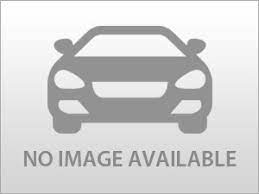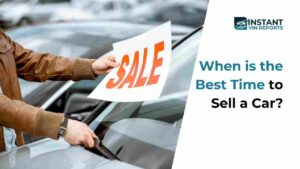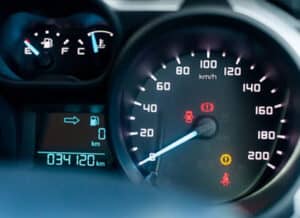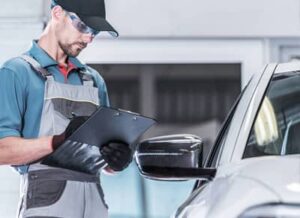No, they cannot be used on public roads. Nevertheless, in some rare circumstances where the law and the traditions require maybe an alteration of a specific dirt bike to the standards of the particular state, the bike can be called to be street-legal.
As the name “Dirt Bike” implies, these vehicles are not well equipped for regular roads but they are perfect for dirt, mud, and hills, or other natural or unpaved roads.
The majority of the laws enacted by different states explicitly stipulate that dirt bikes should not be run on the street.
The explanation is clear: they would be dangerous in the streets without safety systems which otherwise are included in public safety vehicles,
So, if you have ever been curious to them being street motorcycles, the answer would have been the easiest, “no.” Let us now look at some of the laws that govern dirt bikes in, for example,Oklahoma.
Oklahoma plays a major role as we apply the law of the land to use dirt bikes on public roads:
Oklahoma Law: According to the law in Oklahoma, dirt bikes are classified as Off-Highway Vehicles (OHVs) and thus they should not be used in public streets or highways. Although there are exceptions to that like when one is traveling between specified off-road trails and is crossing a road in the process of its travel.
Similar Laws Apply Elsewhere: Most states have the same rules. You should consult your local DMV (Department of Motor Vehicles) or the off-road recreation authority if you can’t ascertain the laws pertaining to your area.
|
Did you know? Dirt bikes are surprisingly lightweight. Unlike their street-legal motorcycle cousins, dirt bikes are specifically designed to be maneuverable and conquer rough terrain. They utilize lightweight materials like aluminum frames and plastic body panels to achieve this. This focus on weight reduction means the average dirt bike weighs less than 200 pounds, allowing for better handling and agility on challenging off-road courses. |
How to Make a Dirt Bike Street Legal
For your bike to be street-legal, the regulations and requirements as outlined by the Department of Transportation (DOT) must be complied with (Legal Modification of a Dirt Bike for It to Become Street-Capable). Specific lists of equipment that are necessary may be different for each state, but in general, these are the components that need to be added to the bike in order to pass the test and get it registered as street legal:
Headlight
It is significant to install a new headlight with DOT approval, which has high and low beam capabilities. A handlebar-mounted switch that controls the headlights can easily be operated while in motion. This switch should be easily accessible in the sense that, one does not need to remove hands from the grips in order to access the switch for changes.
LED headlights are preferred in the market due to their low power consumption compared to halogen headlights and good light-emitting capability. They also last for a longer period of time compared to the halogen bulbs that are commonly used.
This topic necessitates noting that when selecting an LED headlight, one should make certain that it corresponds to the DOT norms for utilization on the roads. Also, think about weather conditions that you will be exposed to while riding since some headlights have better performance in foggy or rainy conditions.
Tail Light
It is also important to underline that a truck’s tail light must be DOT-approved to work as a brake light. It has to be battery operated and able to run for at least 20 minutes if the engine is off. If the engine has given up, it will illuminate the truck.
The brake light requires the usage of both the handlebar brake lever and the foot brake pedal. This is mostly made possible by the Banjo-bolt switch. This dual control makes sure that the brake light works in scenarios of different braking situation for safety. When selecting the tail light just ensure that it is equipped with the LED bulbs so that it can be bright enough and can easily last long.
Side Mirrors
Every state needs mirror, though some needs two. In this regard, there is a need to consult the legal frameworks of different jurisdictions to identify their specific standards.
Choose mirrors that give a good sight of traffic at your back with no hindrance. Adjustable mirrors and those that are resistant to vibration are preferred, as the former provides clear sound even if used at high speeds or on bumpy grounds. For a wider angle of vision, it is recommended to purchase some mirrors with convex designs, through which you can see more of your environment and, respectively, have fewer blind spots.
Turn Signals
Wig wags on the other hand, are very important, especially in giving signals for lane change and turn hence improving safety on the road. It is required in most of the states on motorcycles made after 1973. Hand signals are inadequate for today’s traffic, let alone light and speed conditions, because sometimes the other drivers will not see the signals. Sometimes even when turn lights are provided they may not be well indicated and a driver has to manually raise the signal when turning.
Find available aftermarket turn signal kits for dirt bikes available in the market. LEDs are favored since they are bright and have long life span; this also apply for the turn signals. On range we fit turn signal should be fitted to be steady and should also be easily visible at front of the bike as well as rear side of the bike. They also can be connected with the other lighting system for the nicer look of the installation.
Horn
They have to have at least an electric horn and be street legal to race in the series to name a few. They assist in notifying other road users that you are around particularly during traffic and or emergent circumstances.
Make sure that the played horn is audible above the sound of the engine and meets the decibel standards if any are present in your state. When it comes to the horn, the ideal one should be one that is comfortable, preferably one that is weather resistant, considering that it will be installed outside.
Tires
Replacing the dirt bike knobby tires with DOT legal street tires must be unavoidable. These tires have a tread pattern that enhances their ability to grip the road for paved roads and at higher speed. Street tires are manufactured to give better grip on tarmac, generate less noise, and give enhanced general driving comfort.
Purchasing good street tires provide the best performance for your bike and meet all legal requirements. Find out which tires have favorable reception in terms of their longevity and their ability to perform well particularly over different weather conditions. Also, do not forget to check the inflation and balance of the tires for a good performance and safety.
Power
Lights, additional switches, possibly for turn signals and a horn may require the addition of circuits in your dirt bike electrical system. This can mean large changes to make sure that the electrical system is capable of handling the load that is to be placed on it.
Batting might require installation, the alternator could need an upgrade, and a wiring harness may also need to be included. A battery provides a continuous power supply to all the electrical appliances, while a high-quality alternation supplies enough power. They bundle and encase the cables used in the car to ensure the connections do not cause a short or fail.
Horn
An electric horn is a standard requirement for street-legal motorcycles. It helps alert other road users of your presence, especially in traffic or emergency situations.
Ensure the horn is loud enough to be heard over engine noise and complies with your state’s decibel regulations if applicable. When choosing a horn, opt for one that is weather-resistant and durable, as it will be exposed to the elements.
Tires
Swapping your dirt bike’s knobby tires for DOT-approved street tires is essential. These tires have a tread pattern optimized for better grip and stability on paved roads, as well as for handling higher speeds. Street tires are designed to provide better traction on asphalt, reduce road noise, and improve overall ride comfort.
Investing in quality street tires enhances your bike’s performance and ensures compliance with legal standards. Look for tires with good reviews for durability and handling, especially if you plan to ride in various weather conditions. Additionally, make sure the tires are properly inflated and balanced for optimal performance and safety.
Power
Your dirt bike’s electrical system might need upgrades to handle additional components like headlights, turn signals, and a horn. This can involve significant modifications to ensure the electrical system can support the increased load.
Installing a battery, upgrading the alternator, and adding a wiring harness may be necessary. A battery ensures a steady power supply for all electrical components, while an upgraded alternator provides sufficient power generation. The wiring harness organizes and protects the electrical wiring, reducing the risk of shorts or failures.
By addressing these key areas, you can transform your dirt bike into a fully compliant and safe street-legal motorcycle. This not only expands your riding opportunities but also ensures you are riding legally and safely on public roads. Ensuring your dirt bike meets all these requirements will provide peace of mind and a more enjoyable riding experience.
Legal Compliance and Documentation
Apart from mechanical modifications, street legal conversions involve obtaining legal documentation. This includes a Certificate of Newness, NOVA declaration, Inspection Certificate, V5 log book, and insurance.
The legal requirements also include ensuring the bike has a functioning horn, preferably electric, and a side stand for parking convenience. An adequately mounted license plate holder with integrated lighting is essential for legal display and completing the checklist for making a dirt bike roadworthy and legally compliant.
DID YOU KNOW?
Did you know that dirt bikes have a rich history dating back to early 1900s England? These early off-road motorcycles, inspired by trial competitions, eventually evolved into the machines we know today.
Can I get a Dirt Bike History Report?
Yes, it is possible to know the detail history of any dirt bike provided you have the 17 digits of the VIN.
If you have finally located that perfect motorcycle, bargained for an excellent price, and are practically anxious to take off. When it comes to buying a motorcycle it is equally important that you acquire a motorcycle history check before any purchase that you make.
Here’s why:
- Peace of Mind: The title has to be clear. A history report can further affirm that the bike is not stolen and you have no to worry about an outstanding lien on it to save more headaches.
- Avoiding Hidden Issues: Don’t be caught unaware by hidden costs. Records of past accidents and repairs can provide more information about the bike’s status.
- Ownership History: Identify users who used the bike before and the duration of each of those users.
- Financial Clearances: Check for any encumbrances on the title such as any outstanding loans or any liens.
- Mileage Verification: To minimize the issue of mileage tampering, compare the books mileage figures to the mileage recorded by the odometer.
- In-Depth Specifications: This includes the kind and efficiency of the fuel, periods of the bicycle’s servicing, its measurements besides size and its weight.
- Accident History: Find out if the bike has met any form of accident, and the kind of repair work done on it, if any.
Purchasing a motorcycle history report is beneficial in the sense that you get informed of the motorcycle’s past thus avoiding any mishaps on the way to motorcycle possession.
Conclusions
Riding a dirt bike as a passionate rider is very enjoyable, though, there are legal and safety consequences that come with a package. Worth to mention is that before riding dirt bike on local trails or on public roads it have to meet requirements prescribed by DMV to be street legal.
This is usually in aspects that are legally allowed such as; lights, mirrors among other features of street legal exhaust systems. Knowing the laws and requirements on off-highway vehicles (OHV) is also paramount, as well as knowing where you legally can ride this vehicle in your state or government.
While dirt bikes excel in off-road terrain, riding on public roads requires adherence to traffic laws and safety precautions to protect yourself and other road users.










